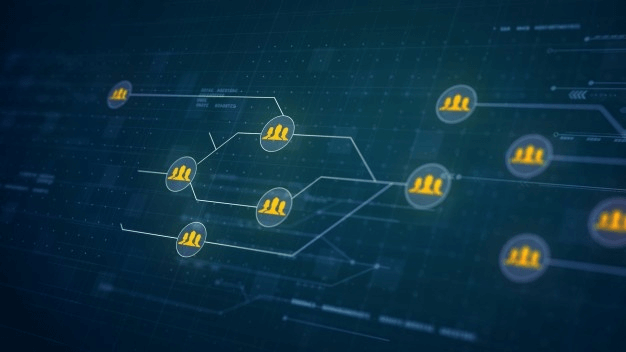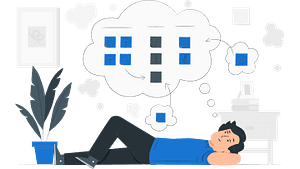Enterprise application integration can be defined as the process of uniting the enterprises’ applications workflows and databases. This task ensures information consistently in your business. Thus every time an application makes a change to the core business data, it is correctly reflected in other applications.
Significance of Enterprise Application Integration
Enterprise application integration is a must-have to ensure maximum efficiency. Businesses need to integrate and streamline multiple business processes and data sources within their ecosystem.
Enterprise integrations can mean many things- including,
- B2B integration
- System integration
- Cloud integration, and
- Enterprise application integration

Regardless of where your applications are cloud-based or they reside in-house, EIA has offered a more cost-effective solution to both of them. These integration platforms allow businesses to tie together all of the functional applications that they so heavily rely on. This simple-to-use solution enables enterprises to manage data sources using one-stop interfaces. Thus, all businesses need to embrace EAI fully.
Database Integration
Over the recent past, studies have suggested that most companies have been evolving towards a common database repository. This strategy allows them to utilize data deduplication tools that help in spotting nonintegrated, redundant data storage practices.
In database integration, establishing a robust common repository or significant data architecture by offering policy controls for access to valuable information is the key to EAI success. Data security techniques are the most critical factor in isolating essential business data, staying in line with internal audit governance policies, and complying with government regulations. These techniques define the mode for database integrations.

Workflow integration
In Enterprise Application Integration, workflow integration has always been based on API directories and catalogs, service buses or message queues. Since different softwares have different Application Program Interfaces, companies may need tools to harmonize the data structures of these other interfaces. This, however, can also be achieved by API brokers or buses themselves.
Transformation of application integration
Recently, two developments have affected the workflow of Enterprise Application Integration. Firstly, many businesses use these “platforms as a service (PaaS)” for workflow integration. To put it simply, this means firms establish a standard set of APIs for component connection and application. These APIs can then be used for current and new applications.

Secondly, shared component technologies and componentization allow the organizations to compose applications from standard components. This can go a long way in reducing the burden of workflow integration as typical applications have the same interfaces.
If you are looking at things in the near future, PaaS-modeled Enterprise Application Integration is more work as it covers the whole enterprise application spectrum. However, it reduces the integration efforts during application changes, deletions, and additions in the long term.
EAI and EA modeling
Enterprise Application Integration can be driven by broad initiatives like business process reengineering or application modernization. This can result in compelling gains associated with using EA modeling techniques.
Enterprise Architecture Modeling allows businesses to identify workflow requirements, data dependencies, and standard business processes. This pattern identification supplements the current application’s available information and workflow integration practices. This results in ensuring successfully met EAI goals for the redesigned EA process set.
Disadvantages of EAI
Following are a few downsides to an Enterprise Application Integration system:
- Constant changes
- Complex architecture
- Performance bottlenecks
- Hard to understand
However, these potential drawbacks can be overcome if the EAI systems are appropriately trained and ready to manage new additions to their legacy systems. Also, companies need to be held accountable for the various point-to-point integrations within the system. This becomes even more critical when multiple applications come across departments, job roles, and locations.
Models for Enterprise Application Integration

There is no such thing as a standardized model for EIA. Consequently, various models have come forward to establish communication between different enterprise applications. In the recent past, the EA systems and the methodologies used have matured so much that it facilitates smoother data transfer and communication between software programs.
Read More : Everything You Need to Know About Cloud Enablement Services
Point-to-Point Integration
Initially, the application integrations were only achieved using point-to-point connections. Now, to fetch data from one application, a script would be used to modify the format or overall structure of the data. This modified data can then be sent to a different EA.
This easy-to-follow process is very effective but is more feasible for a smaller number of applications. Once the number of applications grows, it gets increasingly difficult to keep the systems fully integrated.
Hub-and-Spoke Integration
In Hub-and-Spoke Integration, a centralized hub is connected to the EA systems. This hub then removes the need to program individual dependencies between each pair of applications. However, enterprise application developers still need to use runtime components to manually route data to the correct enterprise application.

Bus Integration
The bus integration model is an evolution of the hub-and-spoke integration model. However, the bus integration model runs without human interference. This model relies on a predefined set of standards to govern the flow of data between applications. Bus integration enables any application to receive or transmit data according to the applied business policies.
Microservices
Last but certainly not least, microservice architecture is the latest standard for cloud-based enterprise application systems. Business applications that are deployed on the cloud can gather data from each deployed microservice. Once the data is captured, it can be routed to the desired databases and destinations using Application Program Interfaces.
Wrapping Up:
The basic idea behind enterprise application integration is using an IT-enabled systems-based solution to integrate enterprise applications. If you have any further queries or want to learn more about enterprise application integration, head to our website Hazentech and get in touch with us. Our team of experts can offer valuable insight that can help you grow your business to new heights.










